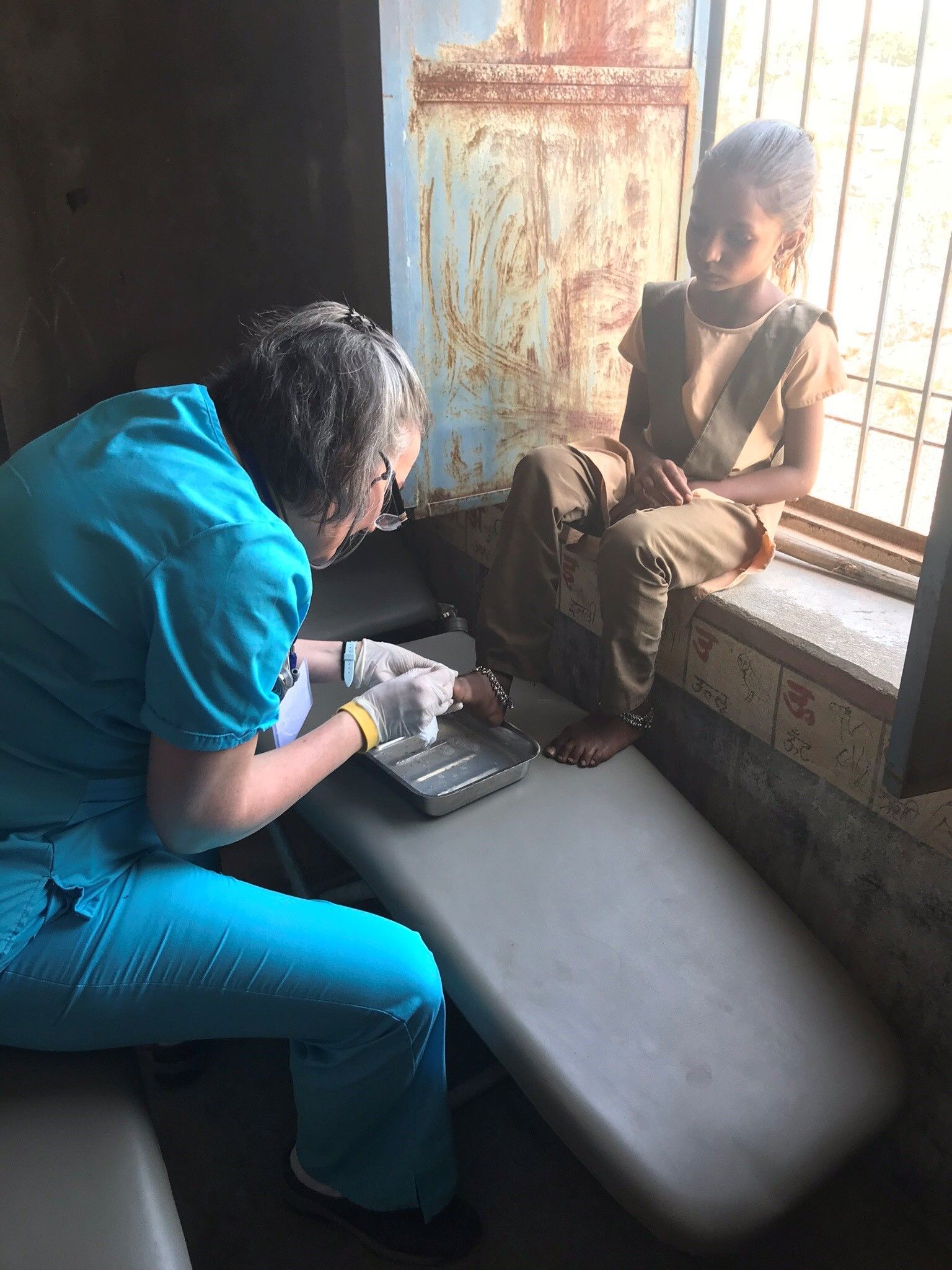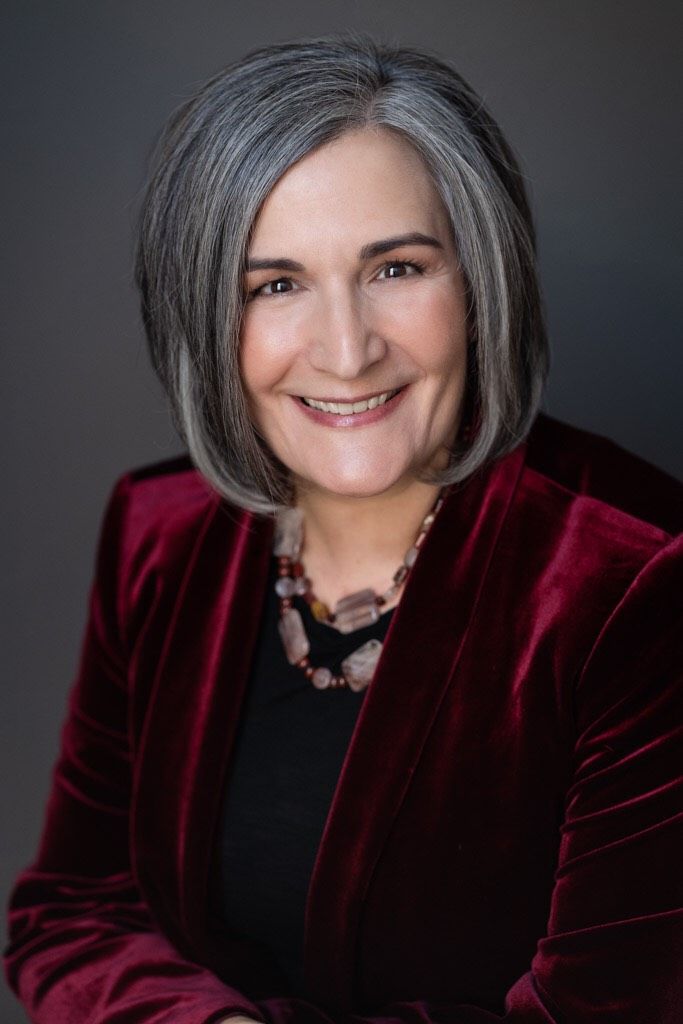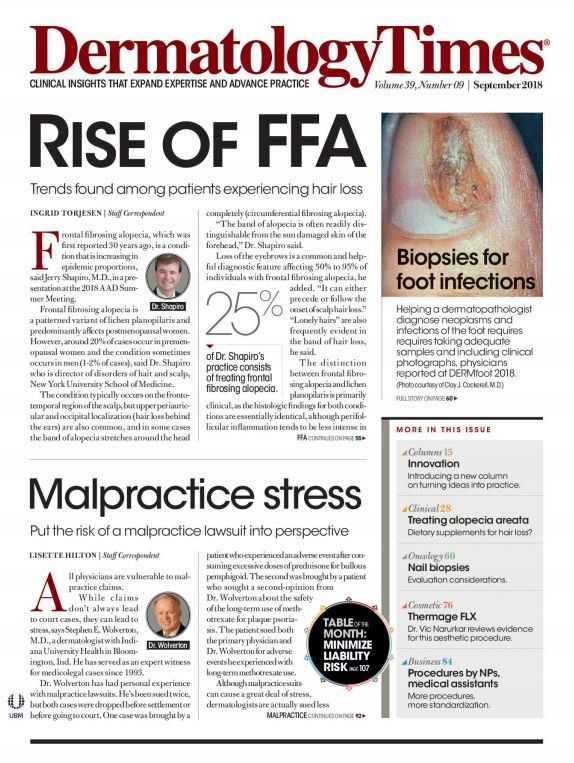- Case-Based Roundtable
- General Dermatology
- Eczema
- Chronic Hand Eczema
- Alopecia
- Aesthetics
- Vitiligo
- COVID-19
- Actinic Keratosis
- Precision Medicine and Biologics
- Rare Disease
- Wound Care
- Rosacea
- Psoriasis
- Psoriatic Arthritis
- Atopic Dermatitis
- Melasma
- NP and PA
- Skin Cancer
- Hidradenitis Suppurativa
- Drug Watch
- Pigmentary Disorders
- Acne
- Pediatric Dermatology
- Practice Management
- Prurigo Nodularis
- Buy-and-Bill
Publication
Article
Dermatology Times
The journey begins when the trip ends
Author(s):
WE medical trip to India ends in eye-opening lessons learned.
WE medical trip to India ends in eye-opening lessons learned. (Medical professional treating a pediatric patient)

Dr. Sarno Ryan

After 22 years in solo and in multi-group private practice â I jumped ship. I left my job in May 2017 to pursue travel, volunteering, per diem dermatology work, and experiences where I can combine both.
Such an opportunity presented itself with WE Charity’sPassion to Heal medical volunteer program. In February, I learned that my application to participate in the WE program as a dermatologist was accepted and in April, I was on my way to Rajasthan in rural India where I stayed for 10 days.
For those who travel with the program we like to say, “The journey begins when the trip ends.” This is my journey.
OUR MEDICAL EXPERIENCE
WE established a clinic in a private school where seven physicians, three physician assistants and three medical assistants from throughout the United States joined a clinic team in the Rajasthan area.
During the course of five days in which we treated patients, I became a different kind of practitioner. I entered with the expectation that I would be treating skin disorders exclusively, but in the end, I was assessing overall health and well-being, offering general medical care, including â among other things â treating intestinal worms in children. Although it was initially met with some fears around my adequacy to offer care outside of my traditional scope of practice, I have tremendous gratitude for this experience in India.
One of the greatest gifts I received in providing medical care under ME to WE, was the purity of the doctor-patient relationship. The only other time I recall an experience like this was in my training as a medical student, not as a physician bogged down with worry about malpractice or charting enough to satisfy the hungry ghosts of medical record keeping and billing.
In the past year, I’ve had the pleasure of meeting and working with Patch Adams, M.D., and his partner Susan Parenti who founded the School for Designing a Society. Both are passionate about what Susan calls “the sweet” - which is the irreducible kernel of connection that must be preserved in any system.
In medicine, this is the doctor-patient relationship which, as we all know too well, is a challenge to remember and maintain in today’s hairball of a healthcare system. Patch says that among the ways to improve our healthcare system, is to do away with malpractice insurance (which is a reach, but wouldn’t it be amazing to untether from the energy of malpractice? Most of us would welcome meaningful tort reform at minimum.)
In India, the joy of simply taking good care of a patient was a blessed experience.
DAY ONE
I was here as a dermatologist to treat skin, but as far as the patients were concerned, I was here as a doctor â an actual doctor they wouldn’t otherwise be able to see with any kind of regularity. My first patient was an adult woman with backache and headache. I was taken aback since this was not my field. What could I miss? Did I remember how to examine for that? Could I ask questions with my translator efficiently and effectively to ascertain the exact history I needed? Did she hit her head? Could she have a subdural? Could I actually help this woman? What about time constraints? Am I pulling my weight?
The local general medicine physicians from the clinic provided invaluable information. Children complaining of stomach aches? Automatic assumption of GI worms - so treat.
As I came to understand the nature of the lives of the people in these villages, it was so understandable that the women would all have backaches - they do back-breaking work every day. I’ve never prescribed an anti-helminthic drug and by the end of the five days, I was dispensing albendazole to children. Gone was the inertial fear around missing something. Enter the purity of discovering: What does this person need that I can provide? What do I have available to me? And, with what can I be creative to meet his/her needs?
HARD AS ROCK KELOIDS
And then, of course, there were dermatological conditions we saw with regularity. Head lice was rampant, scabies not uncommon as was eczema/pityriasis alba. And every adult woman had thickened, deeply cracked heels. I saw many young children with dirt overlying a toenail, which was likely due to some trauma, but it was impossible to know. There were various scars seen from an abdominal patterned scar from a kind of ritual branding to alleviate abdominal pain, severe scarring in one little boy over his scalp and extremities with loss of fingers from a childhood stove burn.
A dermatologist in our group saw a boy with a congenital neurologic defect â possibly spina bifida â who had ulcerations down to muscle (at least) on the buttocks and the bottom of one foot. His father was dedicated to helping his son â including incurring the cost of weekly shots of some unknown substance by someone in his village. Thankfully, through the coordinated efforts of many, this boy will be seen at an academic center in a bigger city.
My most memorable patient was an older woman with tremendously itchy circumferential keloids around her breasts. I saw her on our fourth clinic day. What could I possibly offer?
I thought of a quote from Theodore Roosevelt: "Nobody cares how much you know, until they know how much you care." I had little to offer to relieve her suffering. Did we have Kenalog to inject? Yes. Should I use a semi-large bore needle? Yes. Did the Kenalog get into those hard as a rock keloids? No. There were multiple starts and stops, but I just could not tunnel the needle through stone. Was it uncomfortable for her? Yes â predictable! I took her behind the curtain, positioned her by the window for natural light exposure. Did I think she would feel any shift in pruritis with injections plus the topical steroid I sent her home with? Absolutely not.
She returned the next day. She walked miles for another dose because she said she felt better, but I was highly suspect. Even now, thinking of this brings tears to my eyes because I know there wasn’t a chance that her alleged improvement had anything other to do with the steroid injections; rather, it had to do with the power of being seen by a doctor and being cared for.
We as physicians don't have to fix to heal. In a field where we are so trained to diagnose and fix, what a wonderful reminder that what we offer goes far beyond knowledge. As physicians, we fall deeper into a healthcare system that demands we spend more time spinning our wheels on meaningless tasks as we fall farther from ‘the sweet.’ We are being robbed of our greatest gift to our patients â our humanity, time and presence.
BASIC HEALTH NECESSITIES
We provided basic healthcare services, such as lessons in oral health. We taught children how to swish and spit a fluoride rinse, which was hysterical as we watched the trepidation on their faces melt away and turn into surprised delight, followed by our cheering. But it was discouraging to see the extent of dental problems that needed attention and as far as I knew, access to a dentist was near impossible. I saw several children with tooth pain and sometimes excavated areas within a molar, but I felt helpless in these scenarios.
Basic health education was a big need in the rural areas. We set up an educational program with stations for children who watched a puppet show about basic hygiene, such as hand washing. By the time they saw us, they had a basic understanding of what to expect in a doctor’s visit.
CULTURAL IMMERSION
One of the many wonderful and educational aspects of WE, was its lessons in local culture. We were offered an opportunity to spend a day in the life of a family in their home where we watched the family matriarch cook. We helped her with her chores such as walking to the well for water, pumping water into jars, walking home with the urns on our heads, feeding livestock and conducting home repairs by reinforcing the walls of their home with a mixture of mud and cow dung.
We rode on camels to the local temple where we fed sacred catfish, learned how to tie dye stamp kerchiefs, learned an Indian dance and made samosas. On our final evening, we wore our Indian garb and participated in an Indian feast complete with ceremony, that included a processional march to our open gazebo with music and dance.
LONG-LASTING IMPACT
Although the trip to India feels like it was a lifetime ago, there are ways in which its impact stays with me. Rarely does a day go by in which I don’t think about drinking water â how easily accessible it is here at home and how we use it without a second thought.
It was enlightening and encouraging to hear about ways in which the government was supporting girls and women. Girls are provided free lunch through 12th grade versus eighth grade for boys. Women are given the same guaranteed 100 days of work/year cards with funds directly deposited into bank accounts. One of the many things that the WE program is doing in Rajasthan is establishing WE schools with separate bathrooms for boys and girls. Another is installing smokeless chimney chutes to minimize the retention of smoke from cooking.
Many of my appreciations for this opportunity to practice medicine in India are deeply personal. I am most grateful to WE for this trip which has reinforced in me a passion for medicine. What is not lost in India is the fundamental necessity for care in healthcare.
My most sincere thanks to the WE organization and those that support WE for this life-giving experience.







